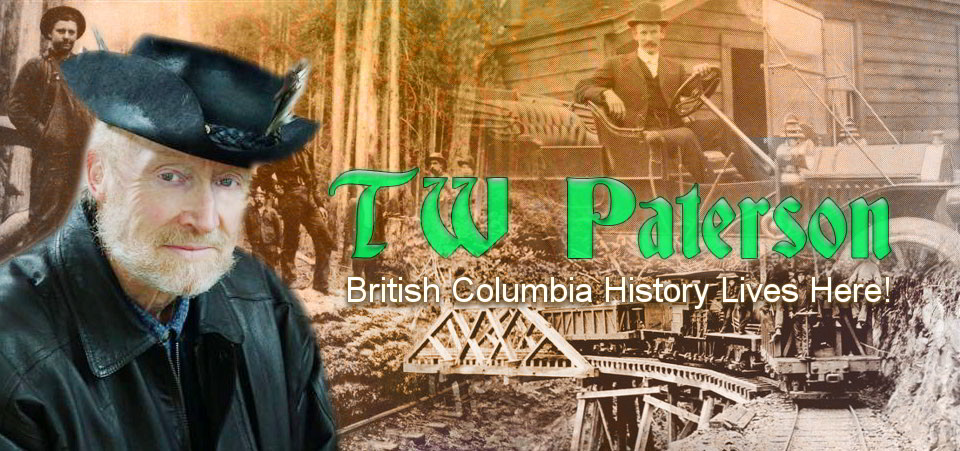Capt. William Grant gave us the Scottish broom plant

Sure, we all hate the damn stuff. But, admit it, it’s pretty when in full bloom as is the case on Hill 60.
“He came here when he was 22, in 1849, made himself a figure, a dashing figure, apparently; everyone liked him, though he was always borrowing; always broke and in debt; full of fun; in general, a carefree adventurer…”
So wrote one historian of Capt. Walter Colquhoun Grant, Sooke’s first settler and inspiration for Sooke Inlet’s Grant Rocks.
Orphaned at the age of 7, the adventurous pioneer was raised in comfort by an aunt and two uncles. His doting relations seem to have given him a taste for the finer things in life and, having quickly squandered his father’s estate, Grant had to sell his army commission in the Royal Scots Greys.
To Fort Victoria
He then conceived the idea of emigrating to the tiny outpost of Fort Victoria, Vancouver Island, to establish a grand estate where he’d play the role of a country squire. His arrival must have created the desired effect, too, the ex-captain stepping ashore in August 1849 to be met by no fewer than eight retainers whom he’d sent on ahead.
Accompanying Grant’s party, historian Derek Pethick noted, had been “a variety of disparate equipment. This included sets of carriage harness (though the Island had as yet neither carriages nor roads), cricket equipment, and a belief that he could operate a farm and perform his duties sufficiently as the official surveyor of the colony.
“Disillusionment was soon to cast its pall over both himself and his employers [the Hudson’s Bay Co.], but in the meantime he added at least variety to the small world of the newly created colony.”
Those most impressed by the flamboyant dandy and his entourage likely were unaware he’d run out of funds in San Francisco and that he’d had to plead for his first year’s salary in advance to buy his passage to Victoria. There, he threw himself into negotiating for an estate, finances being arranged through his uncles–on condition that he never again seek their financial assistance.
On 100 acres overlooking Sooke Harbour
He set up a tiny sawmill and began building ‘Mullachard’ Farm. His agricultural credentials (as were his surveying credentials) were scant; he ably demonstrated this, soon after arrival, by shooting a wild ‘buffalo’–a highly-prized milk cow.
Whatever, aside from being ‘Soke’s’ first settler, Grant can lay claim to being the first Vancouver Island settler independent of the almighty Hudson’s Bay Co.
But, this minor distinction, not to mention the hard (and not overly successful) work of Colonial surveyor (he’d get lost in the bush), and of trying to carve a productive farm from the rain forest, were insufficient to command the “aristocratic grasshopper’s” attention for long. Soon he was off to Hawaii, returning to Sooke but briefly before charging off to the American gold fields then Mexico.
Among his legacy to Victorians were debts to the tune of $1600 (an awesome sum then). Historians charitably accredit this omission to his irresponsibility rather than to criminal intent. Incredibly, even his creditors remembered him with fondness, as an officer and a gentleman.
Capt. Grant never set foot on the Island again
Rejoining the army, he fought in the Crimean War and Indian Mutiny, dying of dysentery, with the rank of lieutenant-colonel at the age of 39.
But he’s remembered for two other contributions he made to provincial heritage: his having been nominated as our “first publicist” for a paper about the Island he wrote and read before the Royal Geographical Society in London.
And for his gift to local fauna for which he’s roundly cursed to this day. For it was that dashing dandy, Capt. Walter Colquhoun Grant, who imported several pods of Scarothamus Vulgarus. We know this colourful native of the Mediterranean areas of Europe as the Scottish broom bush.
Thanks, at least initially, to Capt. Grant, it has marched across much of southern Vancouver Island over the past 165 years. For several weeks in late May and early June, it bursts into blazing yellow bloom along our roadways and anywhere it can take root.
(The spectacular broom bush that precedes this post was photographed beside a logging road on Hill 60, just east of Lake Cowichan. To give it scale, it was almost as big as my pickup.)
